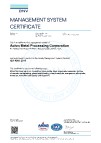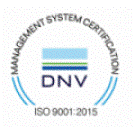SANDBLASTING
METAL FINISHING is an essential process in various industries, aiming to enhance the appearance, durability, and functionality of metal components. One of the fundamental techniques employed in metal finishing is grit blasting, which involves propelling abrasive particles at high velocity onto a metal surface to remove contaminants, smooth imperfections, or create specific surface textures. Among the numerous abrasive materials available, three primary grit blasting methods stand out for their unique properties and suitability for different applications: aluminum oxide blasting, glass bead blasting, and silicon carbide blasting.
ALUMINUM OXIDE BLASTING, often referred to as "alumina," is a widely used abrasive blasting method in metal finishing. It utilizes sharp particles of aluminum oxide, a highly durable material known for its versatility and effectiveness in various applications. When applied to metal surfaces, aluminum oxide blasting offers several advantages:
- Versatility:
- Aluminum oxide blasting is suitable for a wide range of metal types, making it a versatile choice for metal finishing. Whether it's steel, aluminum, brass, or copper, this method can effectively remove rust, paint, heat treat scale, or other contaminants.
- Durability:
- Aluminum oxide is hard and abrasive, ensuring efficient removal of surface imperfections and coatings. It can handle challenging tasks and can be applied to surfaces requiring a thorough and aggressive treatment.
- Surface Preparation:
- It is commonly used for metal preparation and surface finishing before painting, coating, or welding. The abrasive action of aluminum oxide leaves a clean and profiled surface, ready for subsequent processes.
GLASS BEAD BLASTING involves the use of tiny, spherical glass beads as abrasive particles to clean and finish metal surfaces. It is distinguished by its unique characteristics and is commonly employed for specific applications:
- Delicate Surfaces:
- Glass bead blasting is the method of choice when working with delicate or precision components, such as aerospace parts, medical equipment, or fine jewelry. The spherical shape and moderate hardness of glass beads ensure that the surface is cleaned and smoothed without causing damage.
- Deburring and Peening:
- This method is often used to deburr metal parts, removing sharp edges and irregularities. It is also employed in shot peening, a process used to strengthen and enhance the fatigue resistance of metal components.
- Surface Enhancement:
- Glass bead blasting provides a smooth, matte finish that enhances the aesthetics and corrosion resistance of metal surfaces. It is often used in applications where appearance and texture matter, such as architectural metalwork.
SILICON CARBIDE BLASTING is another abrasive blasting method used in metal finishing, particularly when aggressive material removal is required. This method harnesses sharp and hard silicon carbide particles for various applications:
- Aggressive Cutting:
- Silicon carbide abrasive particles are renowned for their angular edges and hardness. This makes them highly effective in rapidly cutting through tough materials. It is a preferred choice for applications demanding quick and efficient removal of coatings, rust, or scale.
- Surface Preparation:
- Silicon carbide blasting is utilized for surface preparation tasks, such as removing old paint, rust, or unwanted surface layers, and for creating a suitable profile for coatings or adhesive bonding.
- Green Energy Applications:
- In the realm of green energy applications, silicon carbide blasting plays a pivotal role in preparing surfaces, including those made of titanium and other materials, for subsequent coatings. It is also instrumental in the surface treatment of PEM (Proton Exchange Membrane) electrolyzer membrane materials, ensuring the elimination of fouling and contaminants and thereby enhancing their longevity and overall performance.
In summary, aluminum oxide blasting, glass bead blasting, and silicon carbide blasting are three primary grit blasting methods used in metal finishing, each offering distinct advantages and applications. Aluminum oxide is valued for its versatility and durability, glass bead blasting excels in precision and surface enhancement, and silicon carbide blasting is the choice for aggressive material removal and special applications, including those in the green energy sector. These techniques are essential tools in the pursuit of achieving desired metal surface qualities for a wide array of industrial and commercial purposes.
Finishing Services Menu
(Click ISO 9001:2015 to enlarge)

